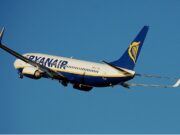The U.S. National Transportation Safety Board (NTSB) has issued a safety alert, illustrated by a series of animations, intended to encourage pilots to take action to reduce chances of being involved in a midair collision.
The safety alert, issued Nov. 16, uses the animations — which depict the pilots’ visual field of view from four airplanes involved in two midair collisions — to show the limitations of the “see and avoid” concept of aircraft separation.
“The animations show how difficult it can be for pilots to spot converging aircraft that may present a midair collision risk in a dynamic visual environment,” the NTSB said.
NTSB Chairman Christopher A. Hart added, “These accidents and the animations clearly demonstrate the safety benefit of augmenting pilots’ vision with technological safety nets. Technologies in the cockpit that warn of traffic conflicts through displays or alerts can help pilots become aware of, and maintain separation from, nearby aircraft, even if they have difficulty seeing them.”
The two accidents depicted in the animations were:
- The July 7, 2015, collision of a Cessna 150 and a U.S. Air Force F-16 near Moncks Corner, South Carolina, that killed both occupants of the Cessna. The F-16 pilot ejected and survived. The NTSB said the accident’s probable cause was the failure of an air traffic controller to provide an appropriate resolution to the air traffic conflict.
- The Aug. 16, 2015, collision of a North American Rockwell Sabreliner and a Cessna 172 near Brown Field Municipal Airport in San Diego. The crash killed all five people in the two airplanes. The NTSB said the probable cause was an air traffic controller’s “failure to properly identify the aircraft in the pattern and to ensure control instructions were being performed.”

